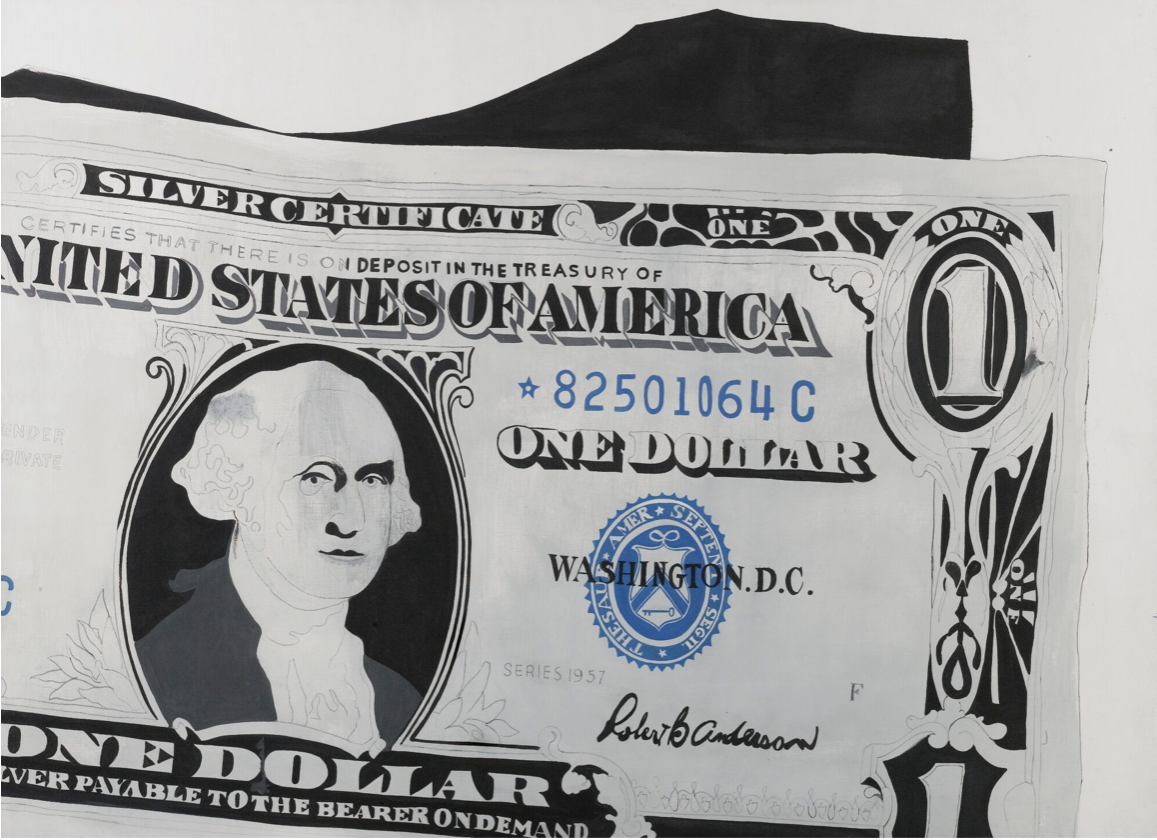Andy Warhol, One Dollar Bill (Silver Certificate), 1962, casein and pencil on linen, 52⅛ x 71⅝ inches
Overview
The IRS recognizes only one type of value, which is "fair market value," defined as "the price that property would sell for on the open market. It is the price that would be agreed on between a willing buyer and a willing seller, with neither being required to act, and both having reasonable knowledge of the relevant facts" (IRS Publication 561). Fair Market Value is generally accepted to include all transaction costs.
Appraisals for tax purposes include:
1) Charitable donations
U.S. law provides a strong incentive in the form of tax deductions for donating art to museums and other relevant institutions. This tax law has cultivated the creation of great museum collections, fostering the development of a common art culture, in large part from personal collections.
Once a donee institution accepts your charitable donation, you will need to demonstrate to the IRS the value of the donated artwork in order for your donation to qualify for a tax deduction. If the value of the donated artwork is over $5,000, this will require a "qualified appraisal," which is a valuation that includes specific criteria and is performed by an appraiser who has the relevant education and experience working with the type of property being donated.
If the donated property is a higher-value item, you can expect that the IRS will scrutinize the appraisal more closely. Artworks valued at $50,000 and above are reviewed by the Art Advisory Panel, which is comprised of a group of selected gallerists and other art world professionals.
*The IRS requires appraisals for charitable donations to be made no more than 60 days before the property is donated to the institution.
2) Gifts
The annual U.S. gift tax exemption in 2020 was $15,000 per person. This means that a person can give another person up to that amount in cash or property, including art, without taxation. These gifts can be made to numerous people each year. For gifts in excess of this amount, the giver of the gift has a tax liability -- and for purposes of gift tax, personal property such as artwork is considered equivalent to cash or other assets. An appraisal may be needed to assess tax liability for that gift.
3) Trusts
Like other assets, art can be placed into trusts, which are tax advantageous. Sometimes trusts are used for estate planning. Placing art in trusts generally requires appraisal.
4) Estates
Estate tax is similar to gift tax: The tax burden is on the giver — i.e., the estate of the decedent, not the beneficiary. As with gifts, personal property including art in estates is taxable. The effective date of valuation for these appraisals must be the exact date of death or exactly six months after the date of death.
If you are an executor of an estate, check with the accountant and/or attorney of the estate about the "unified tax credit" to find out if the estate is eligible for any tax exemptions.
***In general, check with your accountant / lawyer to find out what you need.***
